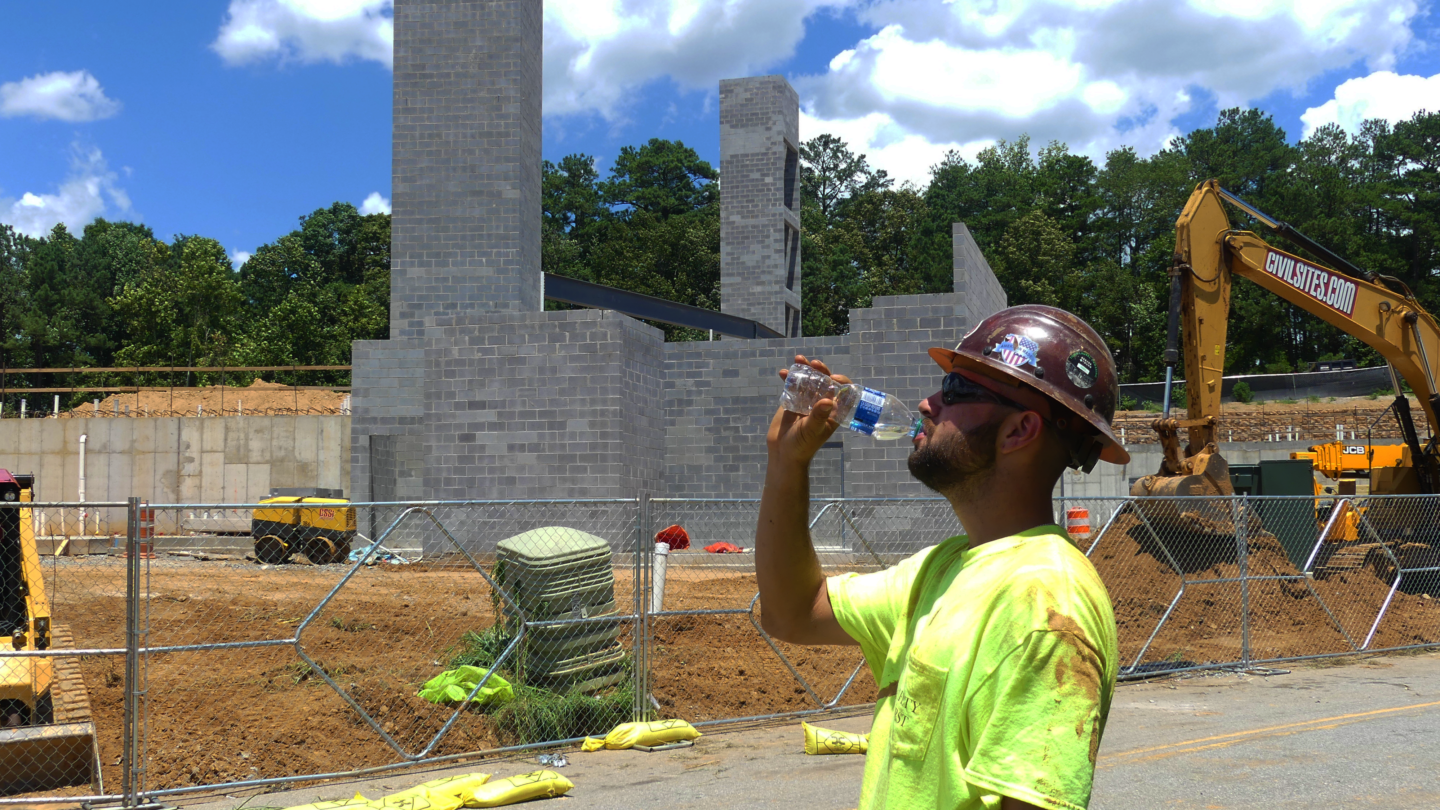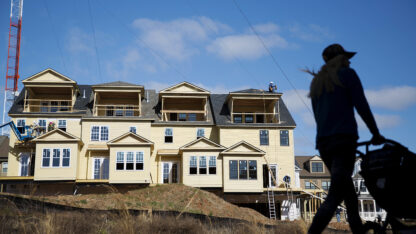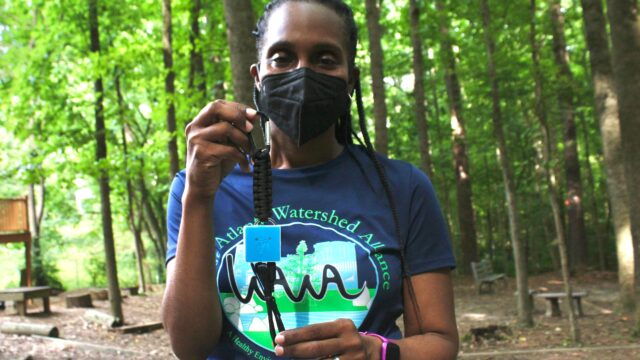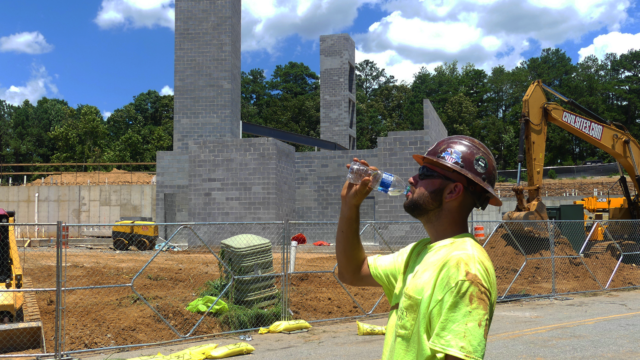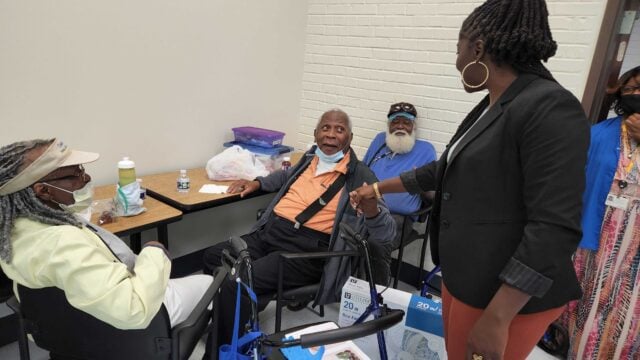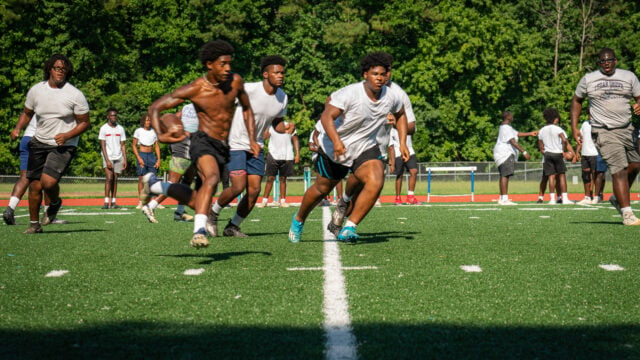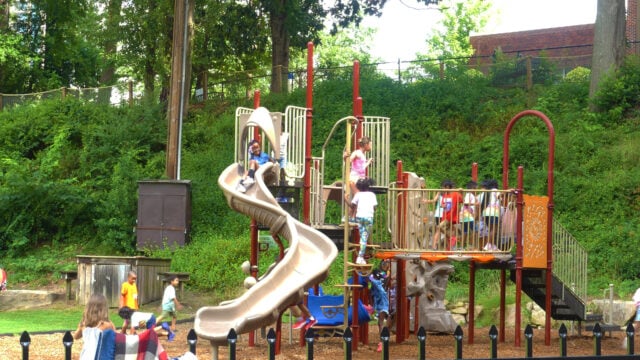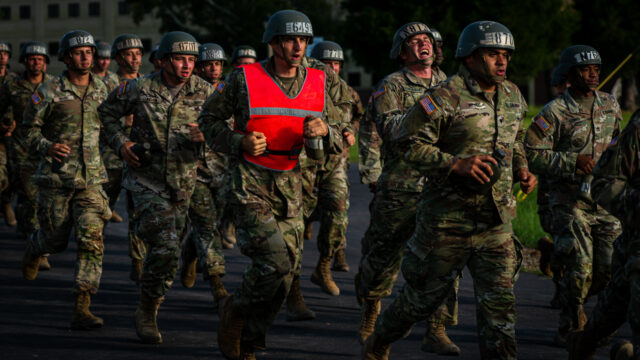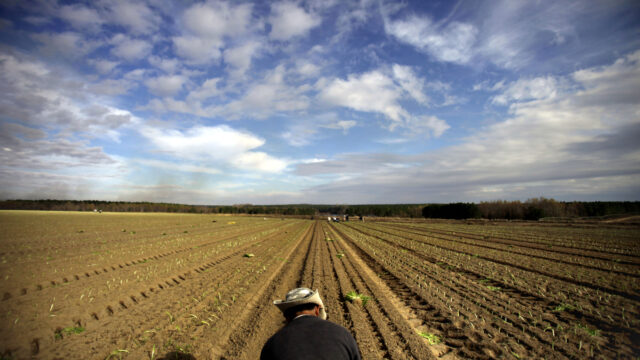Atlanta is experiencing one of its hottest years on record. And with climate change, it’ll keep getting hotter. The steamy temperatures have been especially challenging for people who work outside. In this story, how Georgia construction workers adapt when heat and humidity soar.
At a construction site northeast of Atlanta, a new apartment building is beginning to take shape. Cement walls poke out of the dirt. Workers in hard hats, yellow reflective vests and heavy work boots fan out to shovel giant piles of gravel deposited by a dump truck.
At 2 p.m., it’s almost 100 degrees Fahrenheit.
“It’s brutal.”
Construction Superintendent Gordon Cisney has worked in the industry for over two decades.
He says he’s learned to stay vigilant for signs of heat illness among his crews, especially on days like this one, when the sun and humidity are oppressive.
“You’ve got to prep for it. It’s something you watch out for,” says Cisney. “You just pay attention for the signs for heat exhaustion.”
Signs that include nausea, dizziness, rapid heartbeat or fast breathing. Without intervention, heat exhaustion can escalate to heat stroke, which can result in multiple-organ failure and death.
According to the U.S. Centers for Disease Control and Prevention, more than a third of all work-related heat deaths in the last few decades were among construction workers.
Cisney says managers like him encourage workers to drink lots of water, protect their skin from the sun and take frequent breaks.
“We like the rags that they have, these rags you put around your neck, and bandanas that you can soak in water. Those work really well,” he says. “You know, if it’s a high volume of heavy work, you work 20 minutes and take a 30-minute break or something like that.”
And newer workers need extra time to allow their bodies to acclimate to working in a hot environment.
University of Georgia Geographer and Climatologist Andrew Grundstein researches heat and its impacts on human health and performance. He says high-risk industries such as construction need to adapt to climate change.
Heat is the leading weather-related killer in the U.S.
“As the climate gets warmer we are going to see more heat waves, more really hot days. So, we really need to plan for what to do under these circumstances,” he says. “You’re still going to have people working outdoors in construction and agriculture and other types of work.”
And heat-related injuries and deaths aren’t well documented.
According to the CDC, between 2018 and 2020 nearly 3,100 people died from heat-related causes around the country.
But Grundstein says official death certificates may not tell the whole story.
“When heat waves occur, more people tend to die, but it’s not always attributed to heat. If people have underlying health problems, like a heart problem, that heat will cause stress and they might have a heart attack. So their death is attributed to the heart attack and not directly to the heat,” Grundstein says. “Or, they can get dizzy in the heat and fall off a ladder.”
Georgia doesn’t have state-level laws on workers and heat.
The federal Occupational Safety and Health Administration proposed a plan to tighten federal workplace regulations for extreme heat and prevent heat-related injuries and illnesses. But it’s not yet in effect.
The agency also released a new heat-safety app for smartphones.
Standing under a tree outside the construction site fence, Safety Engineer Marcial Marquez demonstrates the app.
Despite his decades as an expert in risk management and safety training and compliance for the construction, oil and gas, mining and other industries, the app comes in handy, he says.
“Because I cannot evaluate the heat hazard just by my eye, I use the app,” he says.
With a swipe, the app detects heat and humidity levels in the air and calculates the heat index.
Marquez holds up his phone to display the screen. Its indicator points to the red, indicating the highest heat alert.
“The heat feels in this environment, with no shade, about 96 degrees Fahrenheit. So, we’re getting into the danger zone right now,” he says. “And for this particular job at this particular time, workers should be taking breaks every 30 minutes or so.”
The app also provides a list of safety precautions for workers in both English and Spanish. That’s important, Marquez says.
One in every three construction workers is Hispanic, according to the U.S. Census. Many are recent immigrants.
Marquez worries that some may not know they’re entitled on the job to adequate water, rest and shade.
So while a lot of his work involves consulting with some of the biggest corporations in the world about safety, here in Atlanta he also offers heat-safety training to construction workers in Spanish at the Georgia Hispanic Construction Association.
“Once the workers realize how big could be the danger, they are more willing to speak and ask for their rights,” Marquez says. “They have to take care of themselves. Work is everywhere. But their families can’t replace them.”
At the end of every training, Marquez always reminds the workers that no paycheck is worth dying in the heat for.
This story is part of WABE’s The Heat Effect series.
